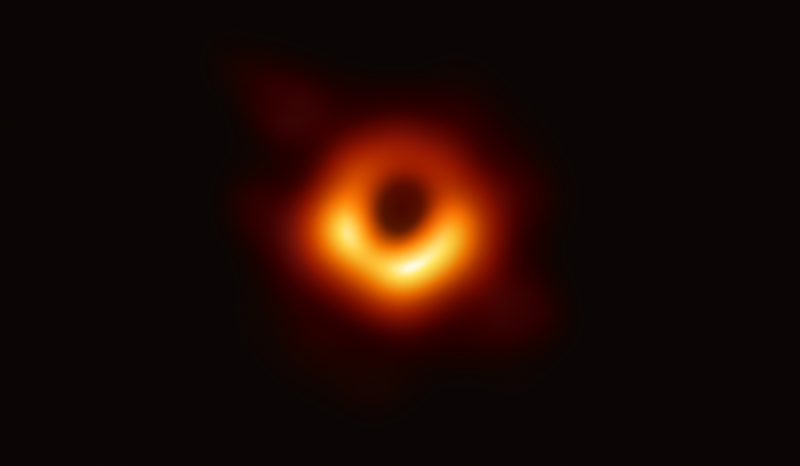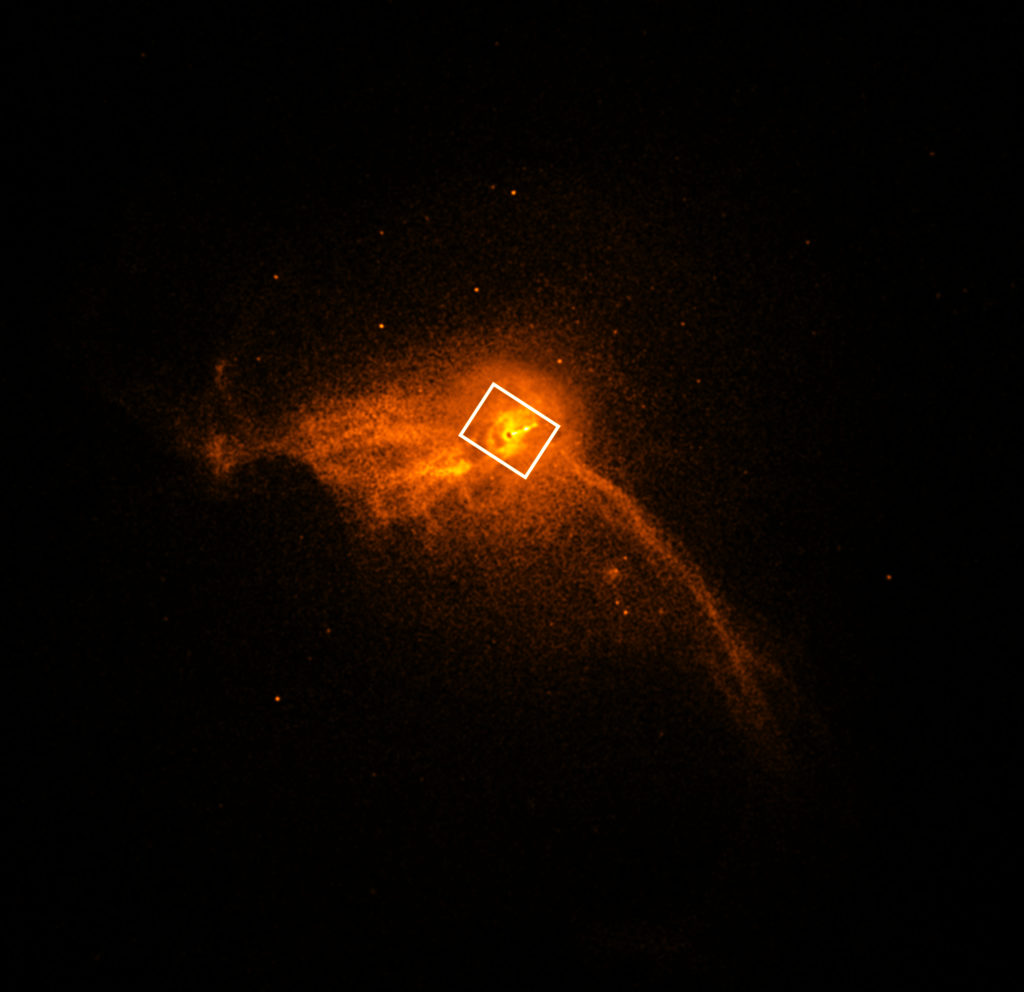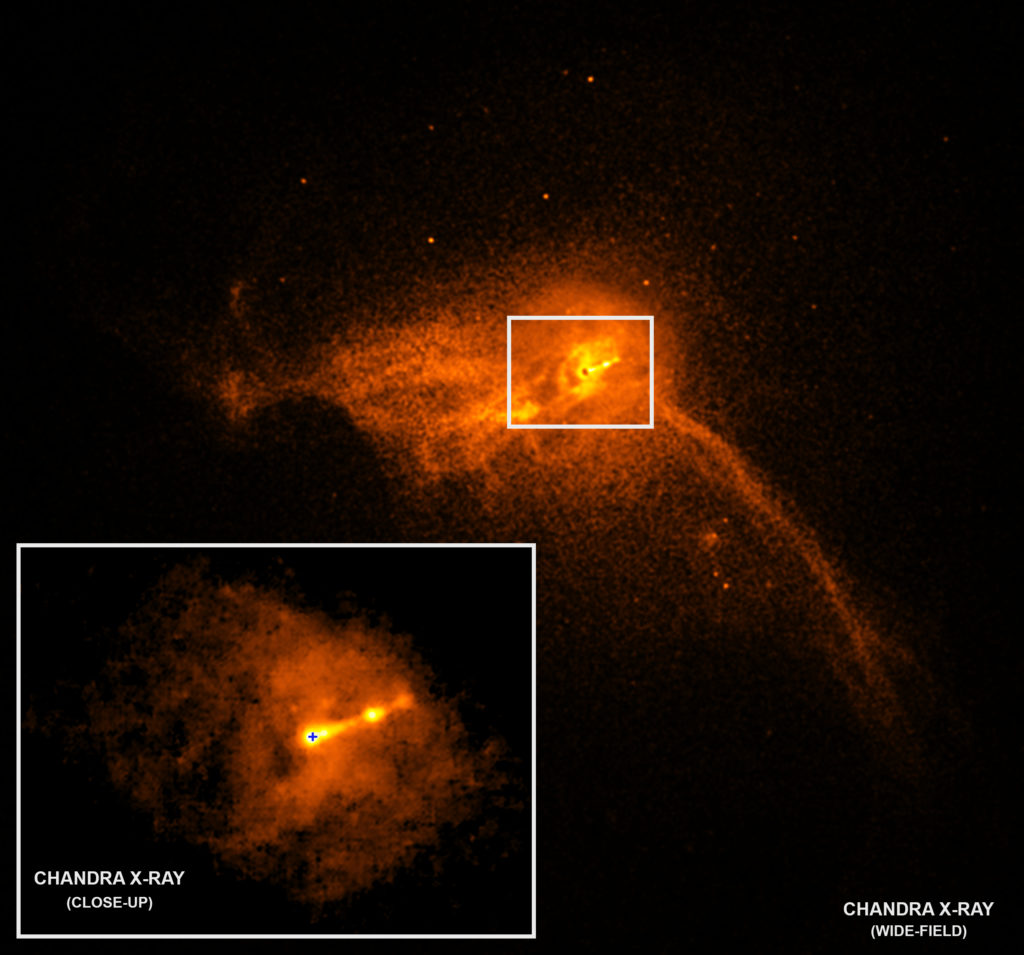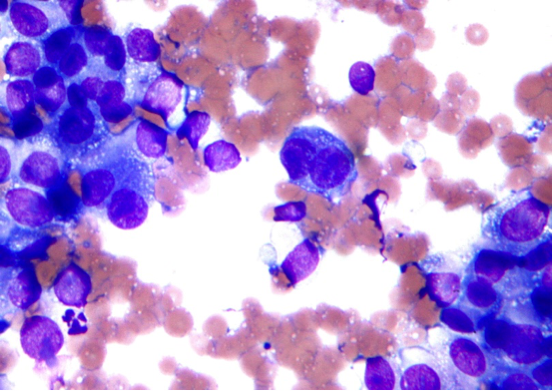Katie Bouman
作者: POP
Black Hole Image Makes History; NASA Telescopes Coordinated Observations
NASA
A black hole and its shadow have been captured in an image for the first time, a historic feat by an international network of radio telescopes called the Event Horizon Telescope (EHT). EHT is an international collaboration whose support in the U.S. includes the National Science Foundation.

Credits: Event Horizon Telescope collaboration et al.
A black hole is an extremely dense object from which no light can escape. Anything that comes within a black hole’s “event horizon,” its point of no return, will be consumed, never to re-emerge, because of the black hole’s unimaginably strong gravity. By its very nature, a black hole cannot be seen, but the hot disk of material that encircles it shines bright. Against a bright backdrop, such as this disk, a black hole appears to cast a shadow.
The stunning new image shows the shadow of the supermassive black hole in the center of Messier 87 (M87), an elliptical galaxy some 55 million light-years from Earth. This black hole is 6.5 billion times the mass of the Sun. Catching its shadow involved eight ground-based radio telescopes around the globe, operating together as if they were one telescope the size of our entire planet.
“This is an amazing accomplishment by the EHT team,” said Paul Hertz, director of the astrophysics division at NASA Headquarters in Washington. “Years ago, we thought we would have to build a very large space telescope to image a black hole. By getting radio telescopes around the world to work in concert like one instrument, the EHT team achieved this, decades ahead of time.”
To complement the EHT findings, several NASA spacecraft were part of a large effort, coordinated by the EHT’s Multiwavelength Working Group, to observe the black hole using different wavelengths of light. As part of this effort, NASA’s Chandra X-ray Observatory, Nuclear Spectroscopic Telescope Array (NuSTAR) and Neil Gehrels Swift Observatory space telescope missions, all attuned to different varieties of X-ray light, turned their gaze to the M87 black hole around the same time as the Event Horizon Telescope in April 2017. If EHT observed changes in the structure of the black hole’s environment, data from these missions and other telescopes could be used to help figure out what was going on.

Credits: NASA/CXC/Villanova University/J. Neilsen
While NASA observations did not directly trace out the historic image, astronomers used data from NASA’s Chandra and NuSTAR satellites to measure the X-ray brightness of M87’s jet. Scientists used this information to compare their models of the jet and disk around the black hole with the EHT observations. Other insights may come as researchers continue to pore over these data.
There are many remaining questions about black holes that the coordinated NASA observations may help answer. Mysteries linger about why particles get such a huge energy boost around black holes, forming dramatic jets that surge away from the poles of black holes at nearly the speed of light. When material falls into the black hole, where does the energy go?
“X-rays help us connect what’s happening to the particles near the event horizon with what we can measure with our telescopes,” said Joey Neilsen, an astronomer at Villanova University in Pennsylvania, who led the Chandra and NuSTAR analysis on behalf of the EHT’s Multiwavelength Working Group.

Credits: NASA/CXC/Villanova University/J. Neilsen
NASA space telescopes have previously studied a jet extending more than 1,000 light-years away from the center of M87. The jet is made of particles traveling near the speed of light, shooting out at high energies from close to the event horizon. The EHT was designed in part to study the origin of this jet and others like it. A blob of matter in the jet called HST-1, discovered by Hubble astronomers in 1999, has undergone a mysterious cycle of brightening and dimming.
Chandra, NuSTAR and Swift, as well as NASA’s Neutron star Interior Composition Explorer (NICER) experiment on the International Space Station, also looked at the black hole at the center of our own Milky Way galaxy, called Sagittarius A*, in coordination with EHT.
Getting so many different telescopes on the ground and in space to all look toward the same celestial object is a huge undertaking in and of itself, scientists emphasize.
“Scheduling all of these coordinated observations was a really hard problem for both the EHT and the Chandra and NuSTAR mission planners,” Neilsen said. “They did really incredible work to get us the data that we have, and we’re exceedingly grateful.”
Neilsen and colleagues who were part of the coordinated observations will be working on dissecting the entire spectrum of light coming from the M87 black hole, all the way from low-energy radio waves to high-energy gamma rays. With so much data from EHT and other telescopes, scientists may have years of discoveries ahead.
This is me
和她相遇的瞬间 我的人生就改变了 所见所闻所感 目之所及全都开始有了颜色
四月是你的谎言
四月は君の嘘

人工智慧驱动了数字医疗
台湾大学资讯工程所 许晋华
人工智慧(AI) 最近在许多领域中都已超越人类的表现,也为医疗保健带来希望,AI也许会比现代医学更能预防、侦测、诊断和治疗疾病,有研究预测在2053年AI执行手术的能力将会胜过人类。虽然很多人担心AI会取代人类的工作,或破坏医病关系,但只要拥抱数位医疗并互助共存,相信AI可以帮我们减少重复性质高的工作,并运用人类的特质来关怀病患、针对不同病患规画适合的疗程,守护健康,让医生在有限的时间中发挥最大的功用。
深度学习不同以往的是,无须人类输入规则,即可自行分析资料,开发出复杂的计算功能,找出资料的特征进行预测,但也因此导致大众无法信任,尤其是当运用AI于医疗保健时。无论如何,在解析这个黑盒子前,在AI的帮助下,的确可减轻医生的工作量,如:自动化电子病例的AI系统,确实提升了医疗体验,虽然此类的技术尚需更多的临床验证,但在此先分享其中几个运用AI的指标性研究:
皮肤癌检测

皮肤癌是最常见的癌症,在美国每年约有540万的新病例与一万多人死亡,由于皮肤癌大多可早期发现,若无提早发现将会提高致命率。然而,检测皮肤并确诊是否罹癌是一项非常困难且耗时的工作,需要皮肤科医生才能执行,但人力长期短缺,让检测变得更加困难。
2017年Esteva等人打造了一个卷积类神经网路 (Convolutional Neural Network) 来区分皮肤的良性与恶性肿瘤,其性能可和一群美国皮肤科医生相媲美。用以训练模型的资料是数千张来自于医师团队所策画的开放资料集,以及史丹佛医院所提供的皮肤病理影像,而测试资料是使用具病理证实的黑色素瘤影像,并将结果与21位皮肤科医生的诊断比较。经测试评估后,其表现相当出色,分别在敏感度和特异度得到了0.91和0.96的结果 。
此研究的表现为实践数位医疗于皮肤诊断带来很大的希望,未来可协助医生诊断,并深入到缺乏医疗资源的区域,提升医疗服务。虽然现仅在实验阶段,但相信在不久的将来会被实作于移动装置或临床检验设施中,有了这样的技术,可大幅降低医生临床检验皮肤癌的时间,皮肤科医生将会专注在病人的治疗上,建立更紧密的医病关系。
糖尿病视网膜病变
高达三千万的美国人患有糖尿病,另外还有几千万人患有糖尿病前期,如何有效控制糖尿病成长的趋势是相当重要的,其中28.5% 的美国糖尿病患者患有糖尿病视网膜病变,甚至导致失明,使得眼睛护理更加重要。糖尿病患者一年需进行1-2次的眼底摄影检查,依视网膜病变的程度,定期追踪,而目前是由医生进行眼底检查并诊断。
2016年Gulshan等人开发了一个深度类神经网路(Deep Neural Network) 来评估糖尿病视网膜病变的眼底影像,采用经54位美国眼科医生和一群资深的眼科住院医生评估的128, 175 张眼底影像作为模型的训练资料,并在另两组资料上作测试─分别有9963 和1748张影像,经评估后模型的成果高达0.97-0.99 。
透过这项技术,在未来也能提升视网膜病变筛检的速度和准确性,并让此项筛检转变为即时检测(point-of-care) ,同时提高早期发现和治疗的机率,但此实验尚未作临床测试,也无法判读出其他可能出现的病灶,如:黄斑部病变等。这类研究能让医生更着重于其他眼部治疗和诊断,并致力于照护糖尿病患的眼部健康。
服药遵从性
考量到医疗保健的成本上涨,服药遵从性成为一个重要的医疗问题,因不佳的服药遵从性而导致死亡的人数每年高达125, 000人,带来了千亿美元的医疗费用,有研究指出,在开立的处方签中,约有一半的病患未按指示服药,也有20%-30%未配合领药。
2017年Labovitz等人使用智慧型手机部署AI平台来评估病患在口服抗凝血剂的服药遵从性,他们应用电脑视觉类神经网路(Neural Network) 于智慧型手机的相机镜头,来识别患者并确认是否服用药物,将此实验组与对照组作比较,比较的指标为药片数和血液采样。经12周在28位病患的实验后,发现使用智慧型手机监控的患者服药遵从性将近100%,相较于对照组仅有50%。
此外,Bain等人在同年也执行了类似的研究于一种精神分裂症治疗药物的服药遵从性,在24周的实验后,结果显示AI组的遵从性比直接观察的对象高出17.9%,并发现AI平台能更快发现并预测未遵守服药的情况。从这两个研究,可想像未来人工智慧能广泛地被应用在评估各种药物的服药遵从性,突破目前研究服药遵从性影响因素的瓶颈。
从上述应用AI于医疗保健的数位医疗研究中,可以发现在实践前仍有许多因素需考量,在此归纳出几点建议,让我们在迈向数位医疗时代前能谨记于心:
- 病患照护为首要目标。数位医疗主要是希望提升照护的品质,因此在发展技术的同时,别忘了将重点摆在「人」,深入了解患者情况并拉近医病关系。
- 迎接医疗型态的改变。别担心AI会取代人类的工作,我们应该要和新技术相互合作,透过数位医疗会降低临床检验的时间,增强医疗体验。
- 最后尤其是要给医生一个忠告:记得投资自己的人际关系能力与技巧。在迎接数位医疗时代的来临前,记得要检视自己在这方面的缺点,重新培养软实力,以深入理解、获得病患的信任,对患者提出更好的医疗建议。
随着重复性质高的工作逐渐被自动化后,人类能更专注于只有我们能执行的任务:建立关系、运用同理心,并利用人的判断来给予指导和建议,也许AI会将医疗保健变得更佳人性化!
